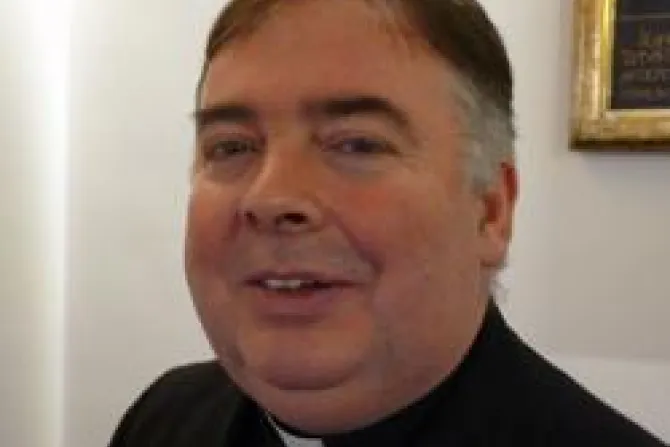Rome, Italy, Jan 27, 2012 / 16:10 pm
The Catholic seminary in Rome where young Englishmen are trained for the priesthood turned 650 years-old on Jan. 27.
It was on that day in 1362 that the forerunner of the Venerable English College, a house for English and Welsh pilgrims to Rome, was founded. In the 16th century it became a seminary.
“It is right in the heart of Rome. It is a wonderful location,” said vice rector Fr. Mark Harold, as he gave a tour of the college to CNA.
The English College “is a really historic place and we believe it is the oldest English institution in the world outside England,” he explained.
The pilgrim house, which is tucked away on Rome’s Via di Monserrato, was in operation for about 200 years and enjoyed royal patronage.
Beginning in 1412 its front wall was emblazoned with the English Royal Coat of Arms – a crest that is still there today. During the reign of Henry VII it was known as the “King’s Hospice,” while Henry VIII described it as “Our Hospice.”
But that all changed in the 16th century when the English monarchy turned against the Catholic faith, fueling a Protestant Reformation in England.
“Then, Pope Gregory XIII met with Cardinal William Allen who was resident here in the hospice,” explained Fr. Harold. Pope Gregory said, “‘why don’t you found your seminary for the English here in this place on the Via Mosserato?’” Portraits of the two founders still claim pride of place in the seminary’s dining room.
Since its foundation in 1579 the English College has produced numerous martyrs who were killed for their Catholic faith upon return to England. The roll of honor in the college’s grand entrance hall is a litany of 10 former students who have been declared canonized saints, 28 who have been declared beatified, and four others who are venerable.
The impressive list of martyrs led to the college being bestowed with the title “Venerable” in 1818.
“It is very much part of the tradition of this college, a tradition of mission for the Catholic Church, a mission showing witness, showing martyrdom for Christ by giving their life,” said Fr. Harold.
He related how the college’s first martyr, St. Ralph Sherwin, was executed at Tyburn in central London in 1581, only two years after the seminary was founded.
His fellow students quickly developed a tradition that whenever an alumnus was martyred they would assemble in front of the college chapel’s altar piece to sing a “Te Deum Laudemus” in thanksgiving. That tradition will be repeated after Mass on Jan. 27.
Over the past 650 years the college has hosted many distinguished guests – from the poet John Milton to Cardinal John Henry Newman to Blessed John Paul II in 1979.
“It is also reported that William Shakespeare, who was a recusant Catholic – so many people say – visited Italy and the college. He certainly wrote widely about Italy in his plays,” claimed Fr. Harold.
This weekend many alumni will return to the college to celebrate the 650th anniversary, including Archbishop Vincent Nichols of Westminster and Cardinal Cormac Murphy-O’Connor, who was also rector for six years in the 1970s.
(Story continues below)
They return to an institution that seems to be in good health with numbers of seminarians on the up and up. When Fr. Harold joined the staff three-and-a-half years ago the college had 25 students. Today it has 45. The majority come from England and Wales, while four hail from Scandinavia.
A former student himself, Fr. Harold says it is “a real privilege” to be a seminarian in Rome because it gives young men six years at the heart of the Church to develop both intellectually and spiritually.
“That spiritual development is particularly important – your life with Christ in prayer, to make it become part of you. Seminary life is not just about acquiring knowledge and skills. It is about growing in Christ,” he said.


